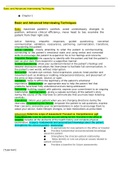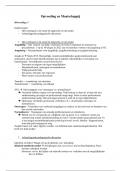Class notes
Lecture 3: Attention and Executive functions (3.6 Neuropsychology)
- Course
- Institution
This summary contains all the information from the third lecture of the course Neuropsychology (3.6). It is supplemented with pictures from the slides and extensive notes from the professor.
[Show more]





